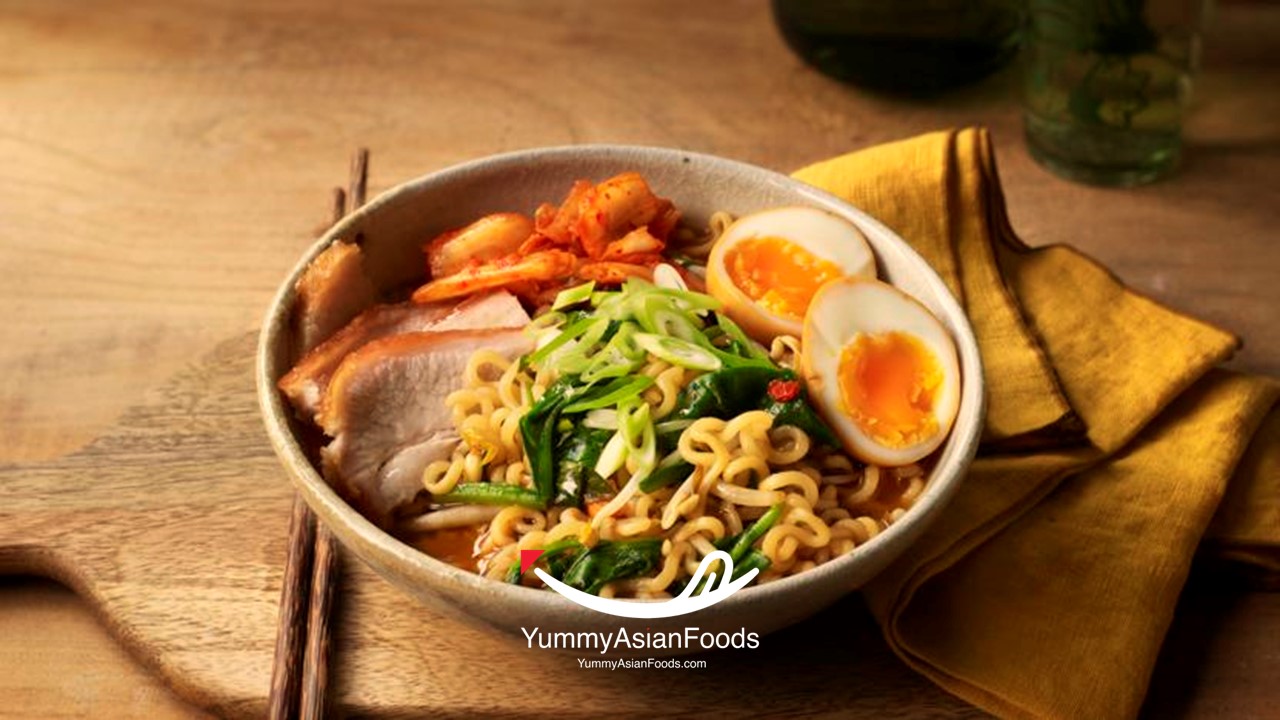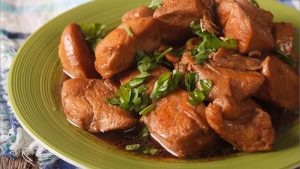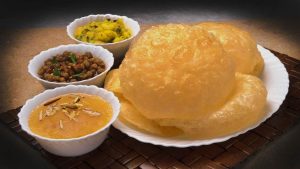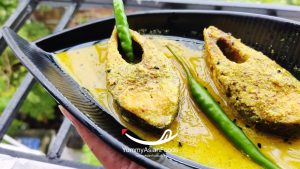Table of Contents
ToggleLooking for the newest, hottest ramen craze? Look no further than Korean ramen! This dish is steeped in history and culture, and its deliciousness is undeniable.
Korean ramen is quickly becoming a global sensation. This popular soup has been around in Korea for centuries but has only recently gained popularity in other parts of the world. People are crazy about this unique dish, and there are many different variations to choose from. Whether you prefer the classic tonkotsu or shoyu variety, there are Korean ramen for you.
What Is Korean Ramen?
Korean ramen owes its popularity to both its unique flavor and its long history. According to legend, the dish originated in the Gyeonggi Province of Korea as a simple folk dish made from wheat flour and water. Over time, Korean ramen evolved into a popular international cuisine that is enjoyed all over the world.
Today, there are many different types of Korean ramen available on menus around the world. Some of the most popular varieties include kimchi ramen, seafood ramen, and miso ramen. Each variation offers a unique taste and texture that is sure to please fans of the dish.
Korean ramen is often thought of as comfort food. Its hearty flavors and savory textures make it perfect for cold winter days or rainy days when you just want to curl up with a good book or movie.
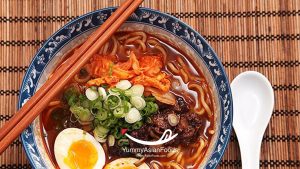
History Of Korean Ramen
Korean ramen, a dish that has a long and varied history, is now one of the most popular international cuisines. Originating in Korea, ramen is a simple noodle soup that has been enriched with various flavors and ingredients over the years. Ramen first gained popularity in Korea during the 1940s as an inexpensive and easy-to-make meal. Today, ramen can be found all over the world and enjoyed by people of all ages and backgrounds.
Ramen began as a simple folk dish in Korea. It was originally made from wheat flour noodles boiled in water until they were soft. Later on, other flavors were added to the soup, including chicken or pork bones and vegetables such as spinach or mushrooms. In the 1950s, ramen became more popular when it started being served at restaurants.
One of the key factors that helped make Korean ramen so popular was its accessibility. Unlike many traditional Japanese cuisine dishes, which are typically expensive and difficult to find outside of Japan, Korean ramen is easy to find all over the world. This is largely thanks to the popularity of instant noodles, which have made it possible for people to enjoy this iconic Korean dish without having to learn how to make it themselves.
The Korean Ramen Trend
Korean ramen has been gaining a lot of popularity around the world due to its unique flavor profile and delicious noodles. The dish is typically made with pork shoulder or chicken broth and is often topped with various vegetables, including scallions and slices of ginger. Some people even enjoy adding Korean chili paste to their ramen for an extra kick. These ingredients combine to create a unique flavor that is unlike any other type of ramen.
The popularity of Korean ramen can be attributed to a few factors. First, the noodles are incredibly delicious and have a unique texture that is especially good when paired with the broth. Second, the dish is versatile. You can add different toppings to make it your own customized meal. Ramens can also be eaten hot or cold, which makes them perfect for both casual and formal dining occasions. Additionally, Korean ramen is low in calories and fat-free, which makes it an ideal choice for those who are looking to eat healthy meals. And finally, Koreans are known for their love of spice, which makes Korean ramen an especially flavorful option.
Benefits Of Eating Korean Ramen
When it comes to satisfying noodle cravings, there is no denying the power of ramen. Whether you’re in the mood for a hearty bowl of chicken or vegetable ramen, this Japanese dish has something for everyone. Beyond its delicious flavor, ramen also offers a variety of health benefits. Here are just a few:
1) Ramen is a high-quality source of protein. Each serving contains 18 grams of protein and only 5 grams of carbohydrates. This makes it an ideal option if you’re looking to add some extra muscle mass or reduce your carbohydrate intake.
2) Ramen is low in calories and cholesterol-free. In addition to being healthy for you, ramen also fits into a healthy lifestyle. Because it’s light and easy to digest, ramen is an ideal choice when you’re trying to eat lighter meals or avoid complex carbs.
3) Ramen is a good source of dietary fiber. The high-fiber content in ramen makes it an excellent food choice for anyone who is looking to improve their digestive health.
4) Ramen is inexpensive. Ramen is extremely inexpensive, which makes it a great choice for those who are on a tight budget.
5) Ramen tastes great and is easy to prepare. Because ramen doesn’t require much preparation, you can make it in minutes without any hassle.
The Different Types Of Korean Ramen
The popularity of Korean ramen has led to a variety of types of the dish available on menus all over the world. There are many different flavors and ingredients used in Korean ramen, making it a popular choice for both vegetarians and meat-eaters. Here is a look at some of the most common types of Korean ramen:
Tonkotsu
Tunkatsu Korean ramen is a popular type of Korean ramen that has pork belly as its main protein. Unlike the original Japanese style tonkatsu ramen, which is made with chicken, tonkatsu Korean ramen features pork belly as its main protein. The pork belly is marinated in a soy sauce and garlic mixture before being cooked in a deep-fryer until it is crispy and golden brown. The resulting dish is savory and full of flavor, and it can be enjoyed alone or paired with some pickled vegetables for a unique twist on the traditional ramen experience.
Miso
Just when you thought Korean ramen couldn’t get any better, a new spot comes along that serves up miso ramen. This type of ramen is made with a broth that is flavored with miso paste and other spices. As the name suggests, this dish is usually served with slices of pork belly or pork meatballs in addition to egg noodles and vegetables. Some restaurants also offer additional toppings, such as fried garlic and green onions. If you’re looking for an innovative way to enjoy your favorite comfort food, give miso ramen a try!
Shoyu
Since the late 1990s, shoyu ramen has become one of the most popular types of ramen in Korea. Shoyu ramen is a bowl of noodles with pork or chicken broth and shredded pork or chicken. The broth is flavored with soy sauce and mirin and is often served with green onions and garlic. There are many variations of shoyu ramen, including ones with different kinds of seaweed and vegetables, as well as those made with fish or shrimp broth.
Shio
The broth is typically made with chicken or pork bones and vegetables simmered for hours until they are fall-apart tender. Then it’s seasoned with a special type of seaweed called dashi and a touch of shio (salt), which gives this ramen its unique flavor profile. Unlike other types of ramen, where noodles are boiled in water before being served, shio ramen noodles are not cooked at all and are simply tossed with the soup just prior to serving.
The Different Flavors Of Korean Ramen
Korean ramen is a popular dish in many countries, but there are different flavors to choose from. There is pork, beef, spicy pork, and soy garlic ramen. Each has its own unique flavor that is sure to please any Ramen lover.
The pork ramen is the most traditional and most common type of Korean ramen. It has a thick and hearty broth with tender pieces of pork in it. Beef ramen is similar to the pork version, but it has a stronger flavor and a richer broth. The spicy pork ramen has a fiery kick to it that will leave your mouth burning for more. Soy garlic ramen is another unique option that features a soy-based garlic flavoring that adds an interesting twist to the usual savory flavors of Korean Ramen.
The Different Noodles Of Korean Ramen
Korean ramen is famous for its different noodles. There are wheat noodles, buckwheat noodles, and cellulose noodles. These different types of noodles offer unique flavors and textures.
The different noodles of Korean ramen are wheat, buckwheat, and cellulose. Wheat noodles are the most common and generally use a broth made with pork or chicken bones. Buckwheat noodles are made from ground buckwheat and can either be boiled in water or used in a savory soup. Cellulose noodles are made from ground starch that is mixed with water and kneaded into a dough. These noodles are often used for cold preparations such as salads or soups.
Korean ramen is a complex dish that contains many different ingredients and flavors.
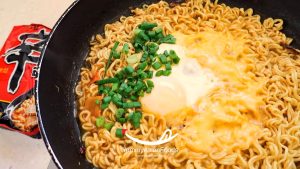
Accompanying Dishes With Korean Ramen
There is no definitive accompaniment to Korean ramen. However, common additions include soy sauce and garlic, both of which can be used as dipping sauces or as part of the overall flavor profile. Other common choices include fresh ginger or green onion, both of which are used as a garnish or as a condiment for the ramen itself. In addition to these traditional toppings, there are also a variety of unique items that can be added to make an individualized dish. For example, some people might enjoy adding a scoop of glutinous rice cake to their bowl in place of the noodles.
The Verdict On Korean Ramen: A Delicious And Satisfying Bowl Of Noodles
In conclusion, Korean ramen is a delicious and satisfying bowl of noodles that all should try. Whether you’re a fan of the salty, tangy flavor or prefer the softer and more subtle soy sauce flavor, there’s a broth for you to enjoy. With varieties such as tonkotsu (pork) and shoyu (soy sauce), there’s something for everyone to enjoy. So next time you’re in the mood for some delicious ramen, give this Korean dish a try!

